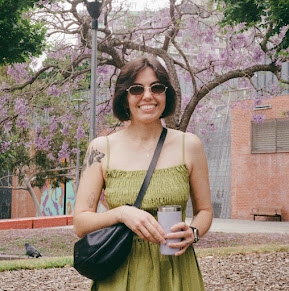You know that feeling when you're bored? When the days seem to drag on, there doesn't seem to be much point in going outside because it's too cold or raining. While everyone has these moments, sometimes it's nice to take a break from your everyday life and do something different.
That is where side gigs come into play. A side gig can be anything you want: freelance work, starting a blog, selling products online. The possibilities are endless! This article will discuss how to start with making and selling merchandise as your side gig of choice.
Decide What You Are Going to Sell
One of the first steps in starting a side gig is deciding what you are going to sell. This can be handmade crafts, custom products, vintage clothing, or even food and beverages. Researching where to sell vintage or custom items will be crucial for effectively reaching your target audience and getting your side gig up and running.You will need to decide how much time you want to spend on your project and then develop a product that matches those needs. You also need to decide on what type of merchandise you want to sell.
Various things can be sold, such as clothing items and accessories, mugs with text written by the user on them (such as a favourite quote), or anything else users may see something they like in.
Create the Design
The design is the most crucial aspect of your product. It would help to decide what you will sell and make sure it suits your brand's aesthetic while also being practical enough for people outside of your niche market to enjoy.For example, if selling coffee mugs, they must hold liquid without spilling it all over themselves or anyone else around them. Of course, an excellent logo on a mug will go a long way towards making customers want it more, but sometimes keeping things simple can work just as well.
Order a Mockup
Ordering a mockup is the next step in creating your print-on-demand merchandise. Print vendors will typically offer three options for ordering: low, medium, or high quality. The more expensive option will provide you with better resolution and detail on screen printing and higher quality paper for sticker prints.There are also options to order a proof before production which can help if anything needs tweaking after getting mocked up. The vendor should be able to share their pricing with you once they have all of the details about what you want printing, but an average cost per shirt would be around $13 - $25 (excluding shipping), depending on where you get them printed and how many shirts you order at one time.
Order a Pilot Batch
A pilot batch is a production run of the product that you've designed. A company specializing in prototype printing near me in Loveland, CO or elsewhere will usually get done with this, and it's also the first time your designs get printed on actual t-shirts or other pieces, so make sure to check them carefully before ordering more copies!Pilot batches can start at different times depending on what kind they are: if you're going for an initial print, then most likely you'll get one as soon as possible after placing the order. It would help to know that printing a pilot batch is not cheap, so it's better to wait until the demand for your product is high enough before investing in them.
Calculate the Prime Cost
There are two economic costs you will need to calculate. The first is the prime cost, which includes raw materials (any fabric or item that can be cut), labour, and other direct manufacturing expenses.Then, add anything else that needs to be purchased, like dye/ink for t-shirts if selling those items. Labour should include any time it takes from the conception of the idea until the creation of finished product–this will depend on how much work there is after spending your initial $200-$500 on tools, equipment and more, but try not to go over a total price tag of $2000 at this point.
The second calculation will entail calculating the retail value per unit multiplied by your desired number of units sold. Again, this math may be difficult to do without taking into account the cost per unit, so it is best if you can get a quote from your manufacturer before proceeding.
Remember, businesses should sell at higher prices and lower volumes than low prices with high volume. You want each purchase to be profitable!
In conclusion, it is possible to start a side gig by making and selling merchandise. The first step would be deciding what you will sell, creating the design, ordering a mockup and then an order of pilot batch. Next, you will need to calculate the prime cost for your business venture to succeed!





Social Icons